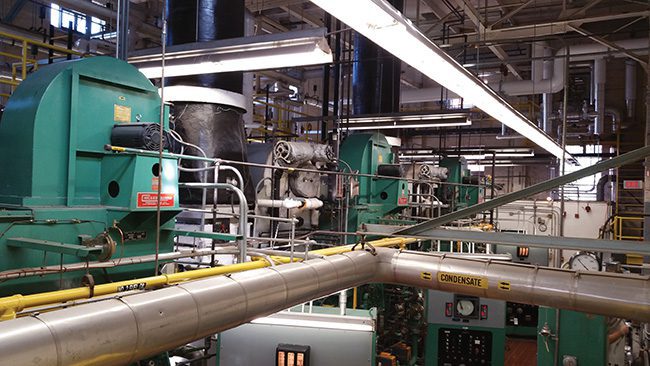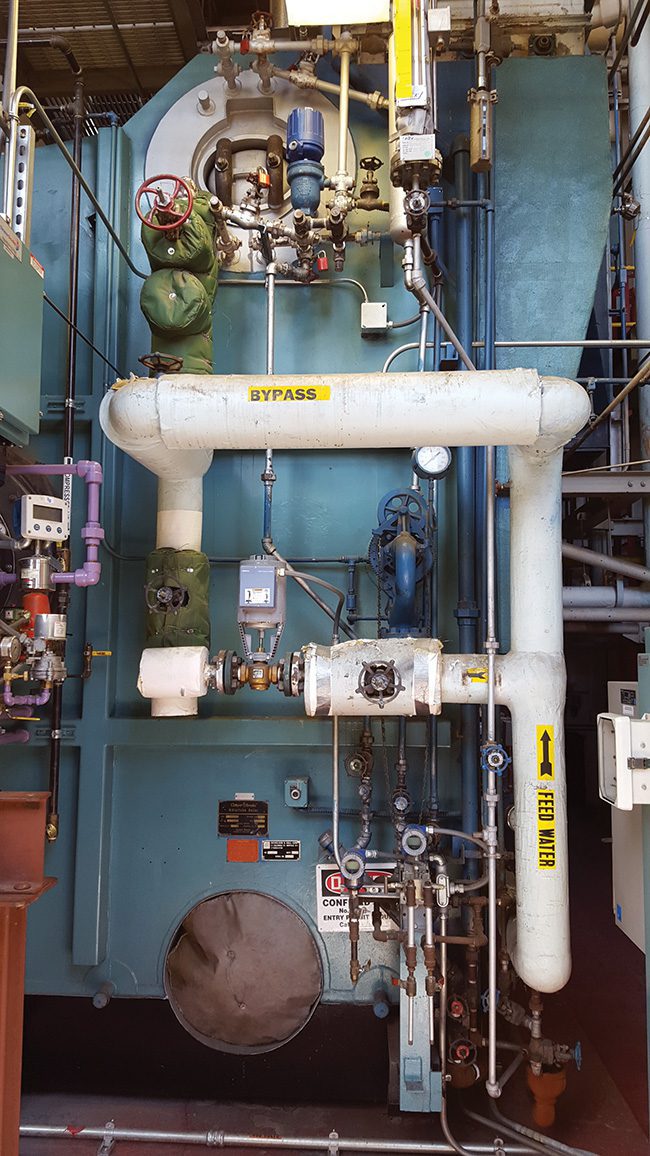Four Key Allies for Keeping Powerhouses in Top Condition
Today, power generators often don’t have the same in-house capabilities that they did in years past. Therefore, managing operations and maintenance at many facilities has become more difficult. Here are some ways to ease the burden.
Global demand for electrical power is set to surge in 2022, driven by a rebound in demand suppressed by the COVID-19 pandemic, as well as fast-growing sales of electric vehicles. But are today’s powerhouses up to the task? Can they deliver the power required—particularly in a world in which there’s more and more concern about how that power is generated?
In our experience as engineers, keeping up will be difficult—but the right approach can go a long way. To start with, it’s important to understand some of the recent changes in the ways powerhouses operate since the 1990s.
Fewer Skilled Staff. Most plants used to have a plant manager, an operations manager, a maintenance manager, plus a whole engineering department so they could do their own projects. Now, there are fewer staff in total, and they tend to have less education and experience.
Fewer On-hand Resources. In the 1990s, it was common to find even midsize and smaller powerhouses equipped with a complete parts room where spare bearings, gaskets, fasteners, raw stock for welding repairs, and other necessities were stored. Power stations had maintenance shops and machine shops. Many of those rooms are empty now. Newer plants are being built without any of those facilities beyond the minimum.
Shorter (or No) Annual Outages. Shutdowns for service and maintenance for large powerhouses would previously last four to six weeks, enough to do a thorough job of putting the whole facility into good shape. Those outages have become shorter—two weeks in duration, or maybe just one. Smaller places get by with no scheduled shutdowns at all. It’s become more of a culture in which equipment is used until it fails or efficiency degrades significantly, and then situations are handled as emergency repairs.
These three trends are making it difficult for powerhouses to go on meeting demand. To help with this, powerhouse operators have four main sources of skills and resources. Getting the most out of each depends on understanding the role of each, and how they work together.
Give Employees the Information Needed to Do Their Work
As we’ve noted, today’s staffs are leaner—some smaller houses get by with a plant manager and no supporting managers, just some control room operators. Power generation companies can help with this by empowering employees with information. Adding sensory devices, connected to the control room, can alert staff when there’s a problem—excessive vibration in a fan (Figure 1), for example, may indicate that it’s coming loose from its mounts or there’s a problem with the bearings.
 |
|
1. Adding sensors to equipment, such as a plant fan located in a hard-to-access area, and connecting devices to the control room can make it easier to catch problems before components fail. Courtesy: Encorus Group |
Previous generations of technology had relatively limited diagnostic abilities, and interpreting the results required significant experience. Connecting diagnostic equipment to the control room required a big master distributed control system, and lots of programming. Now, it’s easy to connect a sensor remotely to a human-machine interface (HMI) to provide detailed feedback on how a machine is running. It’s easy to set upper and lower limits on many parameters, and alerts can be sent to the mobile phones of the plant management team so that they know, even off premises, if there’s a problem.
Diagnostic information can be tracked, and trends noted—such as gradually increasing power consumption on a pump that might indicate that a pipe system such as a heat exchanger is becoming fouled. All these points help multiply the effectiveness of existing staff, giving them the information they need—alerting them to problems and providing some recommendations on what to do about those situations.
Working with Vendors, the Right Way
Vendors can be a great help for powerhouse managers seeking to provide reliable, low-cost power, but they have to be approached the right way. The more specific you can be concerning your problem and the more detailed your specifications are, the better the vendor will be at providing an appropriate solution.
You can also provide vendors with outcomes you’re trying to achieve—such as explaining that you want better control of the ramp-up speed for a motor, rather than simply an on-off control. This might mean you need a variable frequency drive, so your discussion with the vendor might revolve around how to make that happen. In such situations, it’s important to bring the vendor into the planning process early, so that their product can be worked into the design. To get that kind of outcome, you need to know your vendors, and who to talk with about detailed questions.
Twenty years ago, it was easier to find vendor personnel with the ability to help design a solution. It was possible to call them and ask for help on, for example, a boiler (Figure 2), and they would respond with something like, “I know that boiler, and I’m familiar with that issue. I’ve got access to the drawings, and I can tell you the parts and subassemblies you need.”
 |
|
2. Many experienced power industry experts have retired over the past decade, meaning vendors don’t always have the same familiarity they once did with older equipment. That’s why tapping into other engineering resources can be important. Courtesy: Encorus Group |
We find that as with powerhouses, many vendors these days are short on experienced staff. This means that the person you talk with may not have a high degree of knowledge about power plant operation, but will be fully capable of taking your order and having the product shipped.
When you find out what product you need, the vendor may well insist that you use only their approved products and have them installed by their staff, but, in fact, you may be able to get help closer to home. Our experience is that while vendors may want you to use their parts, many of those parts are made by third parties. They’re made to the vendor’s requirements and standards, but in many cases, simple products are made to widely accepted standards.
The part may just be, for example, ASTM A106 Grade B pipe of a specified length and diameter with a flange at both ends. Any competent fabricator can produce that part, and perhaps have it to you faster and at a lower price than the vendor could provide. Code pipe is code pipe, no matter who supplies it. Be sure that the shop you work with has adequate skills in reverse engineering to prepare parts that are of the right dimensions and materials to work in your application.
Three trends we’ve seen are making it easier to get the parts and supplies you need. They are:
- More Helpful Online Information. Take advantage of the increase in the amount of detailed, helpful information available online. Some of this is on the websites of equipment vendors or of industry associations. It may be in text form, diagrams, or videos. Just check to see that the information is from a credible source and is current.
- Easier Availability from Third Parties. Along with more information available online, it’s increasingly easy to access online warehouses of highly specific parts. These may be overseas, but any reliable provider will be meeting the required standards from the American Society of Mechanical Engineers (ASME) and other authoritative sources.
- Additive Manufacturing. The explosive growth of 3D printing is making it possible to keep outdated equipment alive and functioning, in that, it’s possible to build replacement parts from scratch. Again, it’s important that the work be done by people with the needed skills at reverse engineering and producing products that meet the relevant standards.
Selecting the Right Contractor for Each Job
In the same way vendors have specific areas of strength and limitation, contractors aren’t all the same. Some can be eliminated from consideration if they’re not able to do the work you need done. Maybe they’ve bid particularly high because they really don’t want the work, perhaps because they feel it’s too small for them.
In selecting a contractor, it’s important to note the relative strengths of each, perhaps around mechanical, electrical, or civil engineering. Then, pick the best one for the job, depending on the needs of the project.
How Third-party Engineering Firms Pull It All Together
Third-party engineering firms can help make sure all the entities involved in your project will work together to produce the result you want. Here’s part of how that happens:
- Vendor and Contractor Evaluation. Vendors and contractors may have wildly differing quotes on what seems to be the same project. It takes someone with experience to untangle the differences in what each proposal is offering, and third-party engineering firms have the knowledge and the independence to help you make the best selection.
- Incorporating Components into Your System. Many vendors will want to do their own installation on the principle that they know their products best. But an engineering firm can often do the job as good or better at a lower cost, partly because the firm is more aware of the larger context into which the component will fit.
- Making Connections. Engineering firms can present vendors, contractors, and other participants with the needs of the powerhouse. Then, the firm can manage the project, taking responsibility for the work so you get the result you want. A firm can also work with the fact that various vendors may be supplying key components of the project such as boilers, turbines, and heat exchangers, and make them all work together.
- Turnkey Solutions. Some firms are willing and able to take the whole project off your desk so you can focus on day-to-day matters. The firm takes the project from concept through construction, and on to commissioning.
Working with the company’s own employees, vendors, contractors, and engineering firms can be challenging, but by understanding the role of each, powerhouses can keep the lights on for their customers.
—Steven Rakvica leads the Project Management Office for Encorus Group, a multi-disciplinary firm and Service-Disabled Veteran-Owned Small Business (SDVOSB), based in the Buffalo, New York, area (www.encorus.com).